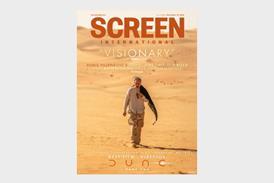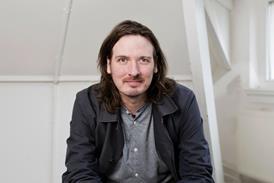Dir: Kim Ki-duk. South Korea-Germnay. 2003. 102mins.
Superior to any of his previous works, this contemplative, lavishly photographed picture made by the prolific Kim Ki-Duk, has been shot in a spectacular location, is calm, leisurely and philosophical and a cinema event in its own right. In sharp contrast to Kim's boldly violent, angry and often disturbing earlier films, Spring, Summer' takes place in a quiet, peaceful valley, surrounded by majestic mountains covered with thick forests that are magically reflected in the crystal clear water of the pond below. Most of the action is reduced to a two-character interplay between an older monk and his young disciple who share a Buddhist temple erected on a floating platform in the middle of the pond. The story is spread, as the title indicates, over the four seasons of the year, which also signify the cycle of a man's life. Civilisation as we know it is far removed, although its presence is very much in evidence throughout. Though many will find abstract interpretations galore to explain the picture, Kim solidly anchors everything he shows in reality and the film can be enjoyed with, or without the mystical semiotics that will be attached to it. As such, it should have no problem reaching every festival in sight - it is also due to play Toronto and San Sebastian - grabbing awards left, right and centre and striking gold at least on a limited basis in arthouse cinemas.
The first episode, spring, follows the older monk (Oh Young-su) as he tutors a little boy (Seo Jae-kyung) in the basic art of communion with nature in a series of portraits that are both eloquent and moving. One day the boy ties a stone to the back of a fish, a frog and a snake just to see how they cope with it. The next morning he finds a stone attached to his own back, which he will have to carry until he delivers the animals from their unwanted burden.
The transition to summer is also a transition in time; the disciple is now an adolescent (Kim Young-min) and the tutor has a few more grey hairs. A young woman (Ha Yeo-jin) comes to the temple to be cured of an unspecified disease, the blood boils in the veins of the two young people and their relationship explodes in a torrid romance, which culminates with the disciple deciding to leave for the secular world when the object of his affections is sent back home. The tutor warns his young disciple that crime is but one step away from possession - but of course no one listens to him
With autumn the leaves on the trees turn to stunning purples and reds and an old newspaper, used to wrap a piece of cake, brings the news of a crime of passion. Soon enough the disciple, now 30, is back with a knife in his hand, his face twisted in rage and frustration. Two policemen (Ji Dae-han and Choi Min) arrive on his trail, but they have to wait until he carves an entire sutra on the floor of the platform. By the time he has finished the anger has left not only him but also the policemen who take him away.
Come winter and the entire landscape is frozen, including the waterfalls in the nearby woods. The old monk prepares a funeral pyre for himself; after his death the younger disciple, by now an adult (played by the director himself) who has served his sentence, returns to the temple and settles down to replace his old master. A woman covering her face with a shawl comes in with a little baby, leaves it in the temple and departs in the middle of night, but drowns when the ice cracks as she tries to cross the frozen pond. Faced by a new task, the man feels he has to atone for his sins. He ties a heavy stone to his midriff, takes a holy statue and sets out for the top of the frozen mountain to meditate and prepare: when spring returns he is the tutor and the baby, by now grown to a tot, is the new disciple.
This brief summary does not do justice to the sheer poetry of the images, the perfect integration of nature into every aspect of human life and the unadorned and simple manner in which old age shares its wisdom with youth. Other great assets displayed in the film include its gentle, loving and often humorous approach, especially with the little boys whom appear in the first and last episode.
Those searching for deeper levels will have no trouble finding them either in such details as the presence of a different animal in each of the five episodes; a dog in the first, a rooster in the second, then a cat, a snake and finally a turtle.
Kim, whose confident hand shows itself in editing and acting as well as directing, is superlatively supported by his technical crew in every department, whether it is in the choice of the location, the composition of shots, the deliberately slow, stately pace throughout, the minimalist approach that concentrates only on essentials and an economy of both words and actions. It is all to the credit of an director who has often sinned in the past by surfeit.
Prod co: LJ Films
Co-prod: Pandora Films
Int'l sales: Bavaria Films, Cineclick Asia
Exec prod: Soma Chung
Prod: Lee Seung-jae
Co-prods: Kim So-hee, Karl Baumgartner, Raimond Goebel
Scr/ed: Kim Ki-duk
Cinematography: Baek Dong-hyun
Prod des: Oh Sang-man
Music: Bark Jee-woong
Main cast: Oh Young-su, Kim Ki-duk, Kim Young-min, Seo Jae-kyung, Kim Jong-ho, Ha Yeo-jin, Ji Dae-han, Choi Min


















No comments yet